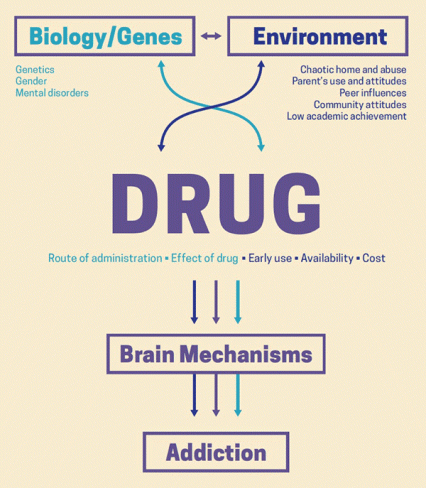
Psychiatry.org Explains: What Is a Substance Use Disorder?
Substance use disorder (SUD) is a complex condition in which there is uncontrolled use of a substance despite harmful consequences. People with SUD have an intense focus on using a certain substance(s) such as alcohol, tobacco, or illicit drugs, to the point where the person’s ability to function in day-to-day life becomes impaired. People keep using the substance even when they know it is causing or will cause problems. The most severe SUDs are sometimes called addictions.
People with a substance use disorder may have distorted thinking and behaviors. Changes in the brain’s structure and function are what cause people to have intense cravings, changes in personality, abnormal movements, and other behaviors. Brain imaging studies show changes in the areas of the brain that relate to judgment, decision making, learning, memory, and behavioral control.
Repeated substance use can cause changes in how the brain functions. These changes can last long after the immediate effects of the substance wears off, or in other words, after the period of intoxication. Intoxication is the intense pleasure, euphoria, calm, increased perception and sense, and other feelings that are caused by the substance. Intoxication symptoms are different for each substance.
When someone has a substance use disorder, they usually build up a tolerance to the substance, meaning they need larger amounts to feel the effects.
According to the National Institute on Drug Abuse, people begin taking drugs for a variety of reasons, including:
- To feel good — feeling of pleasure, “high” or “intoxication.”
- To feel better — relieve stress, forget problems, or feel numb.
- To do better — improve performance or thinking.
- Curiosity and peer pressure or experimenting.
In addition to substances, people can also develop addiction to behaviors, such as gambling (gambling disorder).


Do people choose to keep using drugs?
By: NIH- National Institute on Drug Abuse
The initial decision to take drugs is typically voluntary. But with continued use, a person’s ability to exert self-control can become seriously impaired. This impairment in self-control is the hallmark of addiction.
Brain imaging studies of people with addiction show physical changes in areas of the brain that are critical to judgment, decision-making, learning and memory, and behavior control. These changes help explain the compulsive nature of addiction.
Why do some people become addicted to drugs, while others do not?
As with other diseases and disorders, the likelihood of developing an addiction differs from person to person, and no single factor determines whether a person will become addicted to drugs. In general, the more risk factors a person has, the greater the chance that taking drugs will lead to drug use and addiction. Protective factors, on the other hand, reduce a person’s risk. Risk and protective factors may be either environmental or biological.

How do behavioral therapies treat drug addiction?
Behavioral therapies help people in drug addiction treatment modify their attitudes and behaviors related to drug use. As a result, patients are able to handle stressful situations and various triggers that might cause another relapse. Behavioral therapies can also enhance the effectiveness of medications and help people remain in treatment longer.
- Cognitive-behavioral therapy seeks to help patients recognize, avoid, and cope with the situations in which they’re most likely to use drugs.
- Contingency management uses positive reinforcement such as providing rewards or privileges for remaining drugfree, for attending and participating in counseling sessions, or for taking treatment medications as prescribed.
- Motivational enhancement therapy uses strategies to make the most of people’s readiness to change their behavior and enter treatment.
- Family therapy helps people (especially young people) with drug use problems, as well as their families, address influences on drug use patterns and improve overall family functioning.
- Twelve-step facilitation (TSF) is an individual therapy typically delivered in 12 weekly session to prepare people to become engaged in 12-step mutual support programs. 12-step programs, like Alcoholic Anonymous, are not medical treatments, but provide social and complementary support to those treatments. TSF follows the 12-step themes of acceptance, surrender, and active involvement in recovery.


Suicide Prevention: The 988 Lifeline is a national network of local crisis centers that provides free and confidential emotional support to people in suicidal crisis or emotional distress 24 hours a day, 7 days a week in the United States. We’re committed to improving crisis services and advancing suicide prevention by empowering individuals, advancing professional best practices, and building awareness. About The Lifeline.

Department of Mental Health and Substance Abuse Services
Treatment & Recovery Options Click Here
